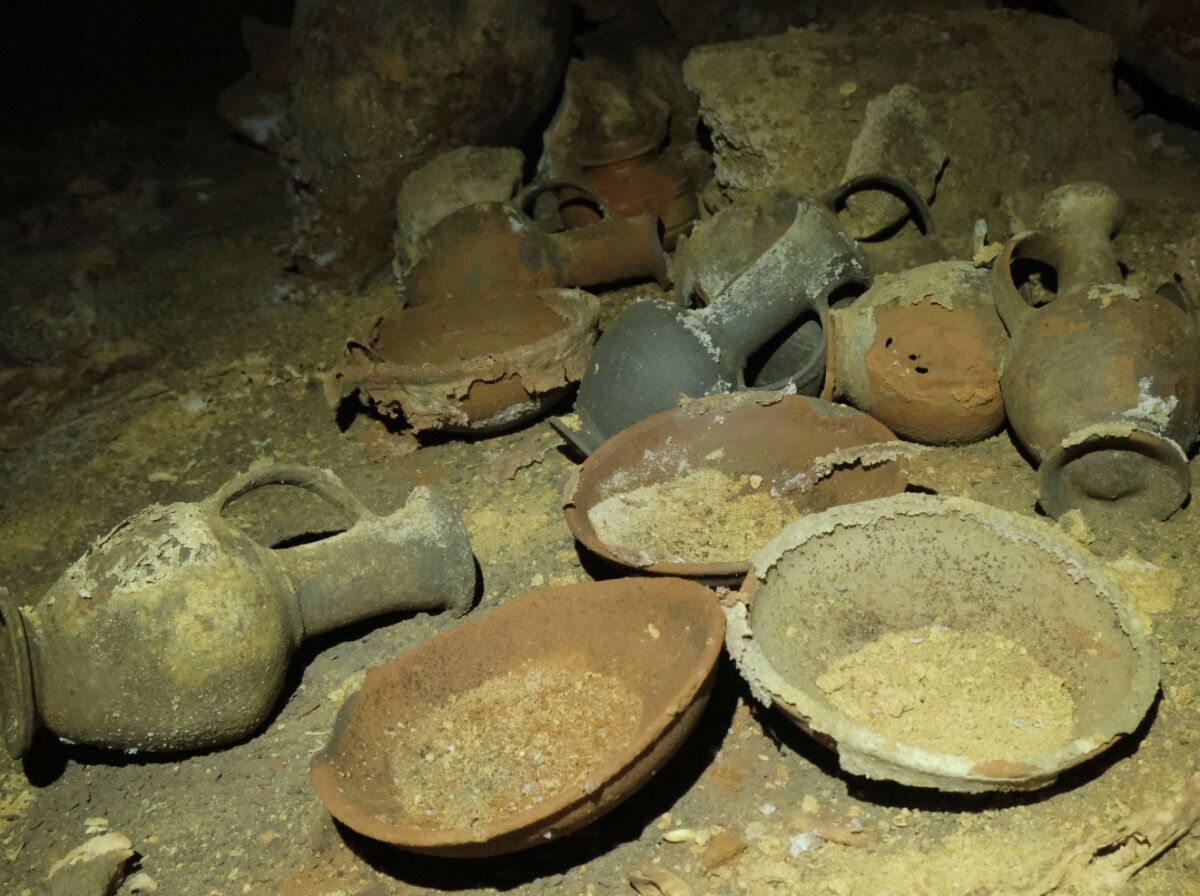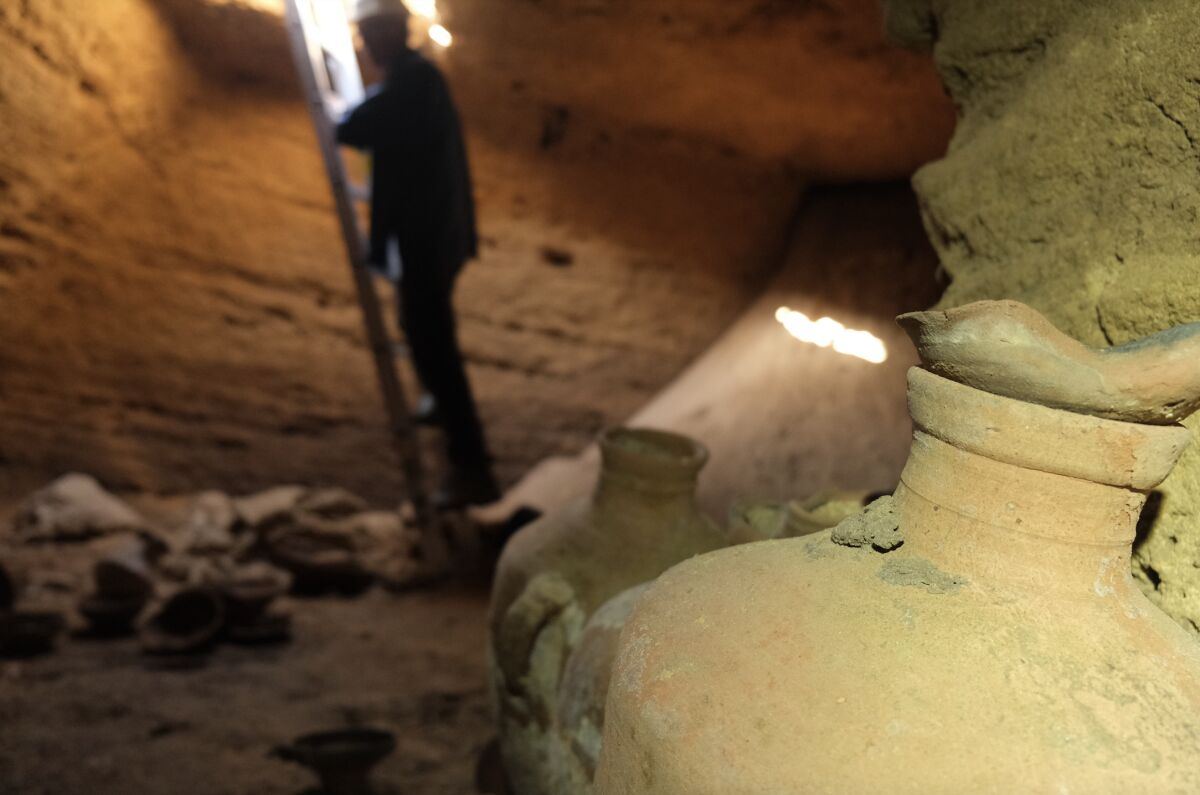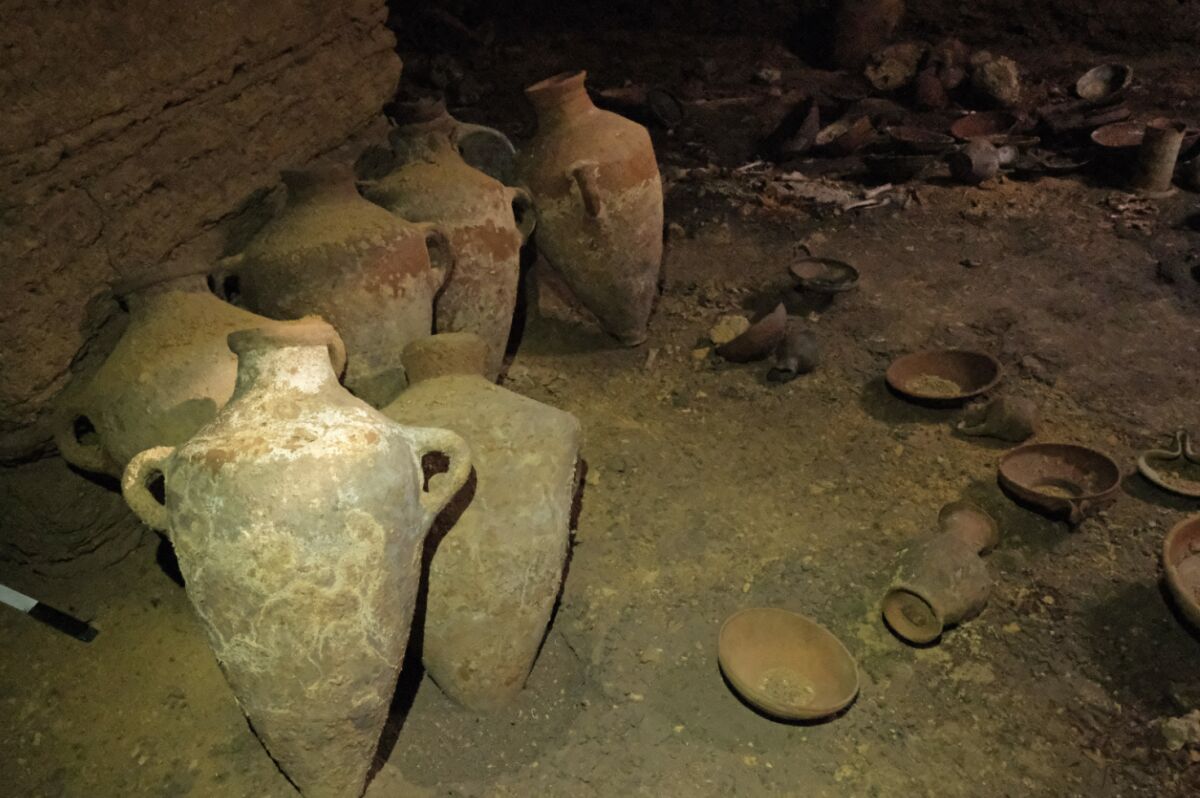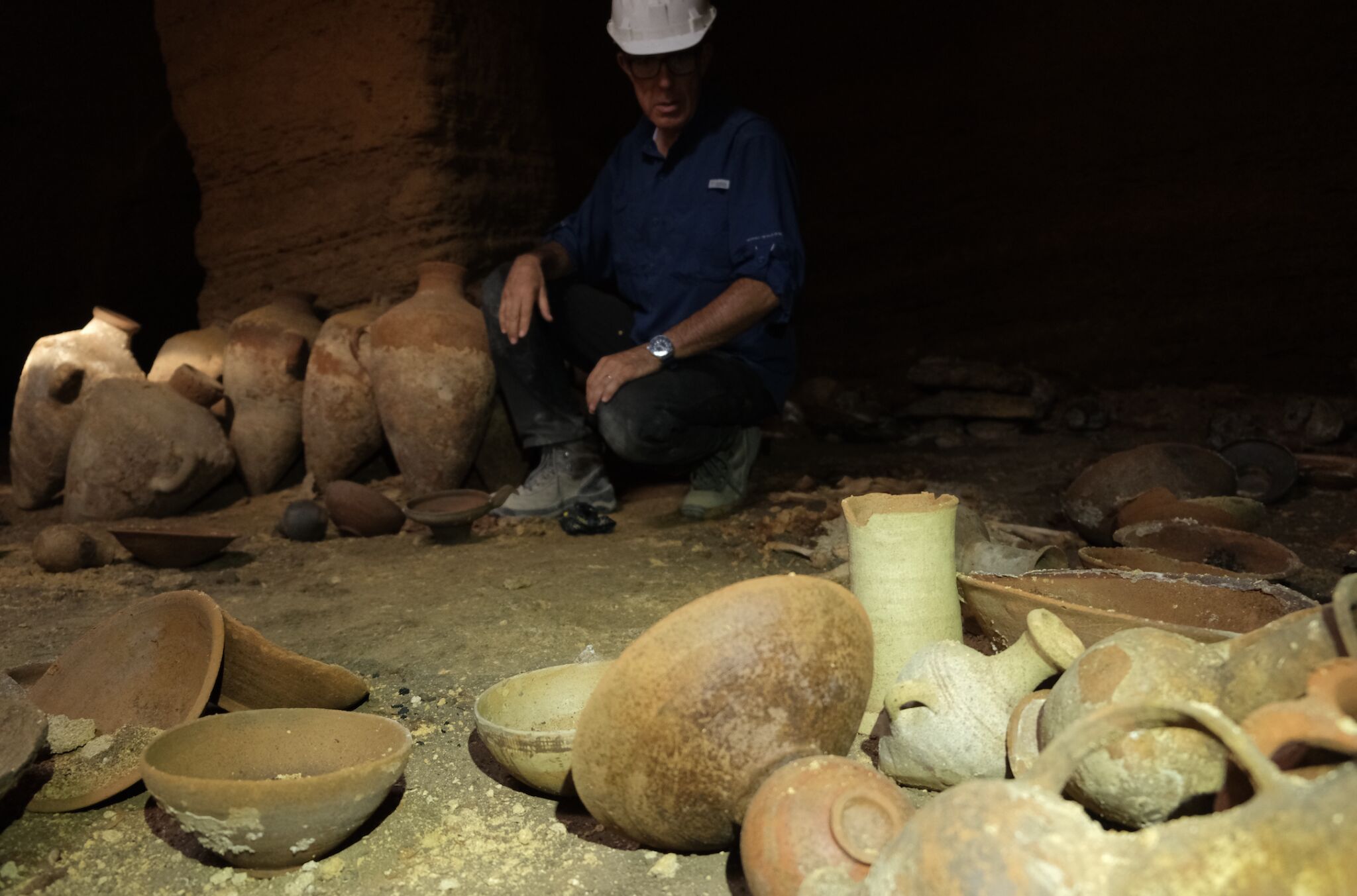During construction work last Wednesday at Palmachim National Park, along Israel’s coast, a digger operator was surprised when his machine cut through the roof of what turned out to be an underground cave. Israel Antiquities Authority (iaa) specialists were called to the scene, descending into the 2.5-meter-deep cave via ladder to find a wealth of untouched remains—dozens of intact vessels, bronze tools, weapons and skeletons—laid out around the cave, all arranged in the form of a ceremonial burial.

iaa Bronze Age expert Dr. Eli Yannai excitedly summarized the discovery: “This is a once-in-a-lifetime discovery! It is extremely rare to come across an ‘Indiana Jones film set’—a cave floor laid out with vessels untouched for 3,300 years, since the Late Bronze Age, about the time of the powerful King Ramesses ii.” He continued:
The fact that the cave was sealed, and not looted in later periods, will allow us to employ the modern scientific methods available today to retrieve much information from the artifacts and from the residues extant on the vessels—for example, organic remains that are not visible to the naked eye. The cave may furnish a complete picture of the Late Bronze Age funerary customs. The cave predominantly contains tens of pottery vessels of different forms and sizes, including deep and shallow bowls, some red-painted, footed chalices, cooking pots, storage jars and lamps for lighting.
Below is the video taken at the time that the cave was first entered—and you don’t have to understand Hebrew to appreciate the level of excitement (“Wow! I don’t believe it!”):
The wealth of items in the cave, their period of use (13th century b.c.e./Late Bronze iib) and even their production origin was immediately recognizable to the iaa archaeologists. The cave “contains pottery vessels imported from Cyprus and from Ugarit on the northern Syrian coast, as well as from nearby coastal towns, including Yafo (Jaffa), Ashdod, Ashkelon, Gaza and Tel Ajjul, clearly showing that the population of Yavneh-Yam (Palmachim Beach) played an integral part in the lively trading activity that took place along the coast,” Yannai stated. This “lively” international trading situation along the coast of Israel during the Late Bronze period is something that has been increasingly attested to in archaeology over the last few years (see here and here).

iaa director Eli Eskosido and Israel Nature and Parks Authority director Raya Shurky issued the following enthusiastic statement:
The discovery in the Palmachim National Park is unique and absolutely astonishing! The news of the discovery of the cave spread like wildfire in the academic world, and we have already received requests from many scholars to take part in the planned archaeological excavation. … Within a few days, we will formulate a plan to carry out the research and the protection of this unique site, which is a feast for the archaeological world and for the ancient history of the land of Israel.”

This veritable time capsule will hopefully shed light on this extremely early, pre-monarchy period in biblical Israel’s history, with a tantalizing connection to the period of the judges and the debate about the timeframe of the Exodus. This Yavne-Yam/Palmachim site was an important sea port during the Middle Bronze and Late Bronze periods, as shown by archaeological excavations in the surrounding areas. It continued to be inhabited through the Iron Age (and it is within this region that the famous Hebrew-text Mesad Hashavyahu ostracon was discovered). Hopefully, this cave will contain some form of inscriptions—one of archaeologists’ greatest treasures! We’ll endeavor to keep you posted as information emerges from the more detailed investigation of these finds.

